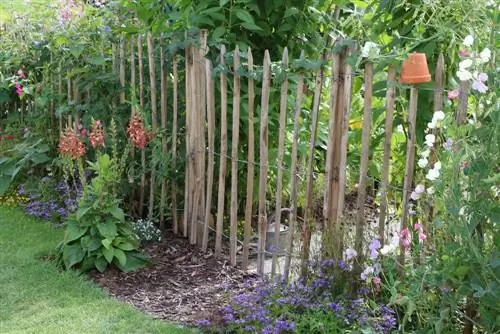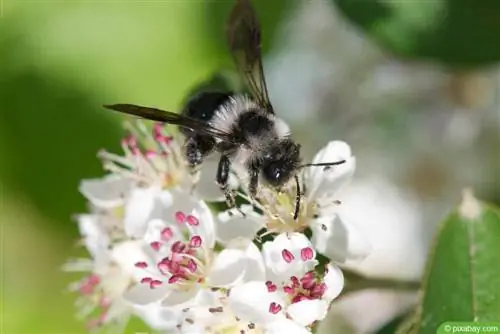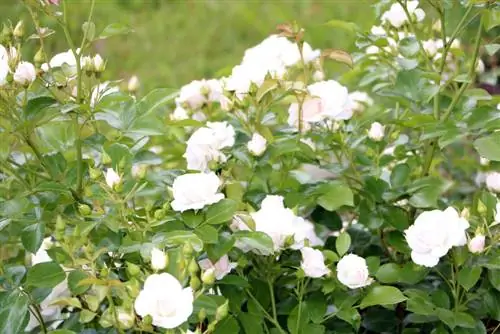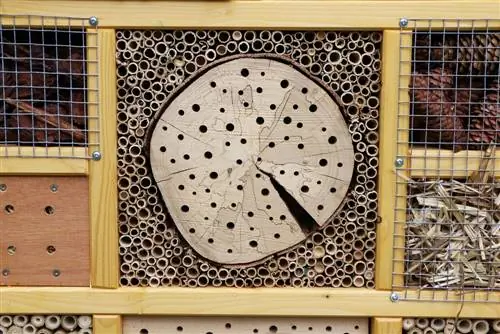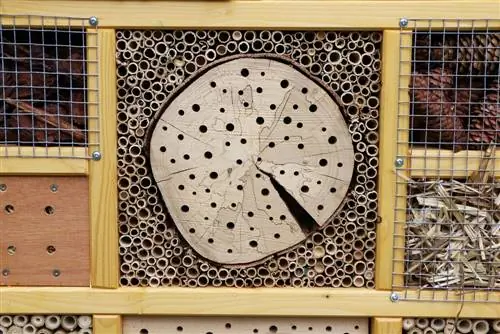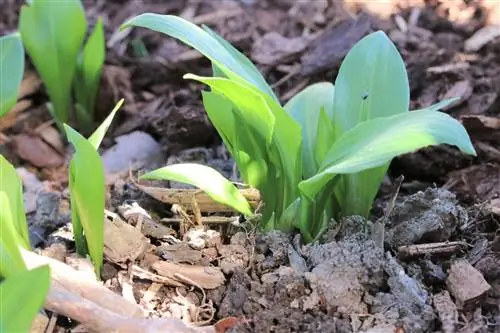- Author admin [email protected].
- Public 2023-12-17 03:39.
- Last modified 2025-01-24 12:45.
A property, for example a house with a garden or an allotment garden, has been newly acquired. However, the previous owners left the garden completely to their own devices for the last few years and now it has become overgrown. But with the right steps, even a completely overgrown garden can be easily cultivated again. Of course, this also means a little work.
Get an overview
The first step to a new garden is that the hobby gardener has to get an overview of the wild growth. Depending on how high the grass is and how wide the bushes have grown, any existing paths and seats are no longer visible. But these could also be included in the planning for the new garden. Bed borders, borders, tree stumps and even building materials or tools left behind by the previous owner can also be hidden under the wild growth. Therefore, the overview should be obtained as follows:
- Walk area by square meter
- Mark anything that could cause tripping with a stick
- this is especially important for the use of machines
- otherwise they could get stuck on the obstacle
- will be destroyed in the worst case
- immediately clear away loose trash and materials
- mark landscaped paths and terraces
Tip:
If the obstacles, such as old tree stumps or stone bed borders, are not marked, damage to the machines can occur when using lawn mowers or brush cutters if they come into contact with the obstacles.
Equipment, materials and machines
In order to get the garden into an initial, easy-to-overlook condition, some tools are needed. A brush cutter or chainsaw is not always available. If no purchase is planned in the near future, all machines and equipment can also be rented on a daily basis from well-stocked garden shops. However, the more overgrown the garden is and the longer the work takes, the more we recommend purchasing it. In order to combat the overgrown garden in the first few days, the following devices and machines are needed:
- Brushcutter, for the tall grass
- Lawnmower for finishing touches
- Verticutter to aerate existing lawn
- Tiller for loosening soils
- Chainsaw for trees
- electric hedge trimmer for cutting hedges
- Pitchfork
- Wheelbarrow
- chipper
- Calculations
Tillers, chainsaws and scythes are also available electrically from well-stocked garden shops and therefore do not necessarily have to be used with a petrol engine.
Cleanup
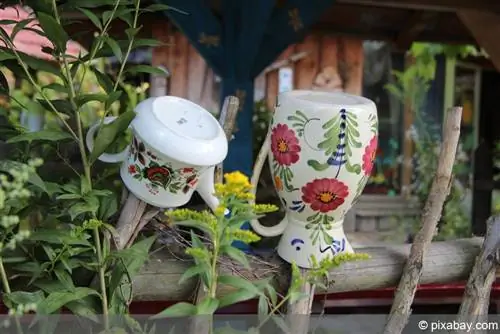
Before shrubs or trees are completely removed, a rough plan for the new garden should already be in place. Old trees, even if they look unkempt, cannot be replaced so quickly, but they can provide a nice shady spot over a seating area in the garden. In the case of an overgrown hedge, it must be noted that due to the Nature Conservation Act and the birds that may breed in the hedge, it cannot be radically cut between March 1st and September 30th. However, isolated shrubs may be cut back. Otherwise, when cleaning up the overgrown garden, you should proceed as follows:
- clear loose trash to the side in a corner
- trimming tall grass with a brush cutter
- pay attention to the marked obstacles
- rake up green waste in a corner of the garden
- You can create a compost directly here
- this one doesn't need a border at the beginning
- cutting back large trees
- possibly cut down completely
- Put tree cuttings through the chipper
- also put on compost
Use the pitchfork to put the entire cuttings on the wheelbarrow and take them to the corner where the compost was created. Found rubbish, such as old gardening gloves from the previous owner, flying bags or paper and other materials that cannot be reused are collected in another corner. Walk a lawn again with the lawnmower.
Tip:
The material that is still usable goes into a third corner, such as secateurs that were still lying between the bushes or a garden hose that can still be used. Sorting all the items found can then wait for now.
Garden style
The style of the garden should of course adapt to that of the house. Anyone who has bought an old farmhouse and wants to redesign the garden will certainly orientate themselves towards a farmer's garden. With a simple single-family or terraced house, anything is possible, but a modernly designed home should also be surrounded by a modern garden. For each style, the following should be considered before planning:
- does the hobby gardener want useful plants
- only beds with flowering plants should be created
- Does the old garden design still fit into the new concept
- everything needs to be changed
- or can the old design remain
Tip:
The style of your own garden is of course a matter of taste and a farmhouse can also be surrounded by a modern garden concept with clear lines. Likewise, a cottage garden on a single-family or terraced house can radiate decorative warmth.
Keep existing plants
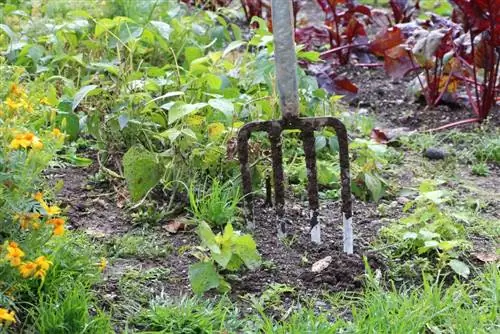
Once the garden has been roughly tidied up, you can decide which plants, trees and shrubs should be kept. There may also be a wild flower bed with bulbous plants and perennials in one corner. This can also continue to be used once the weeds have been cleared and the perennials have been cut back. An existing raspberry hedge can also be used after cutting. The following overview should be obtained:
- are there old fruit trees in the garden
- are there other types of fruit that can be used
- for example currants, gooseberries, etc.
- Do existing beds fit into your own concept
- do the existing plants suit your own taste
The working time is particularly important when deciding on the trees and bushes. Because a raspberry or blackberry hedge grows very quickly and can therefore be a lot of work even in summer.
Tip:
If you are not sure whether one or other fruit tree is still bearing fruit, you should wait for the next harvest. If the tree is too old and no longer bears weight, it can still be felled. It looks the same with the fruit bushes.
Look for garden ideas
If you have never planted a garden before, it can be difficult for you to plan the new one. If there are already paths, a terrace and other seating areas in a garden, then it is easier because after tidying up there is already a somewhat finished picture of the previously overgrown garden. However, if this is not the case, then these systems must also be planned. A good tip is not to just look through various gardening magazines. In many communities, so-called “open gardens” are offered by private individuals, which can offer a lot of inspiration. Further help can be found as follows:
- View plant portraits on the internet
- this way many questions can be clarified in advance
- Soil and light requirements
- Distances from other plants
- Width and height of the desired plants
Tip:
Before visiting an “open garden”, the owner should be asked whether photos or perhaps even a short film can be taken. Then you can review the many impressions at home and find many ideas for your own garden.
Planning the new facility
Once the garden has been cleared of all old growth, the new planning can begin. What is particularly important here is the timing. If there is still some construction work to be done on the newly purchased house, it is important to consider whether machines still have to drive through the garden to get to the house. Then it is not worth rebuilding the garden. Otherwise, when planning the new garden, you should proceed as follows:
- should the old, possibly existing paths be used
- as well as terraces or seating areas that have already been created
- are the beds conveniently located
- should a pond be created
- pay attention to the position of the sun when planting
- not all plants can tolerate sun all day
- Even all-day shade is often not tolerated
- plan new paths or seats
- Plan your lawn
- Planning a tool shed or garden house
You shouldn't plant too many plants in one bed, otherwise it will quickly become confusing. The saying “less is more” should be taken into account here. Only a few different plant species, for example five or six, should be used in a larger group. Three to five plants of each variety are then cultivated. This is how peace is created in a bed.
Tip:
The most important thing when planning the new garden is how much time the hobby gardener allows for work in his garden. A pond, many trees, a long hedge or even many bushes can be a lot of work. If this is not desired, the garden should be designed to be as low-maintenance as possible.
Work step by step
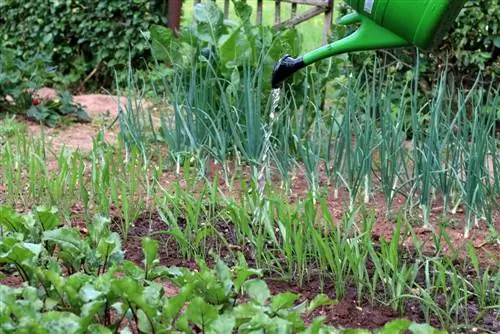
If the garden is to be completed according to planning, then work must be done step by step. The rough work is carried out first. This includes new paths, terraces, seating areas in a corner of the garden as well as a watercourse, pond or fountain. A barbecue area with a brick-built grill can now also be built. You should proceed as follows:
- Prune trees decoratively now
- Plan garden fencing
- possibly plant a new hedge
- Build privacy screens for terraces and gardens
- possibly set up the pergola according to plan
- build a tool shed or garden house if desired
The finishing touches should only be carried out after these construction measures have been completed. If you are planning a lot of beds around a lawn that doesn't yet exist, the first thing you should do is stake out and delimit it. Depending on the season, the beds can now be planted with flowering and useful plants before a new lawn is sown, which must not be walked on for the next while. Once everything is ready, planted and laid out, garden furniture and decorations can have their place in the garden.
Tip:
Rolled turf is quicker than sowing a new lawn. For this purpose, the intended area is prepared and the lawn is laid out. This is also not allowed to be walked on for the first few days, but in contrast to sowing, the area can be walked on and loaded much more quickly.

